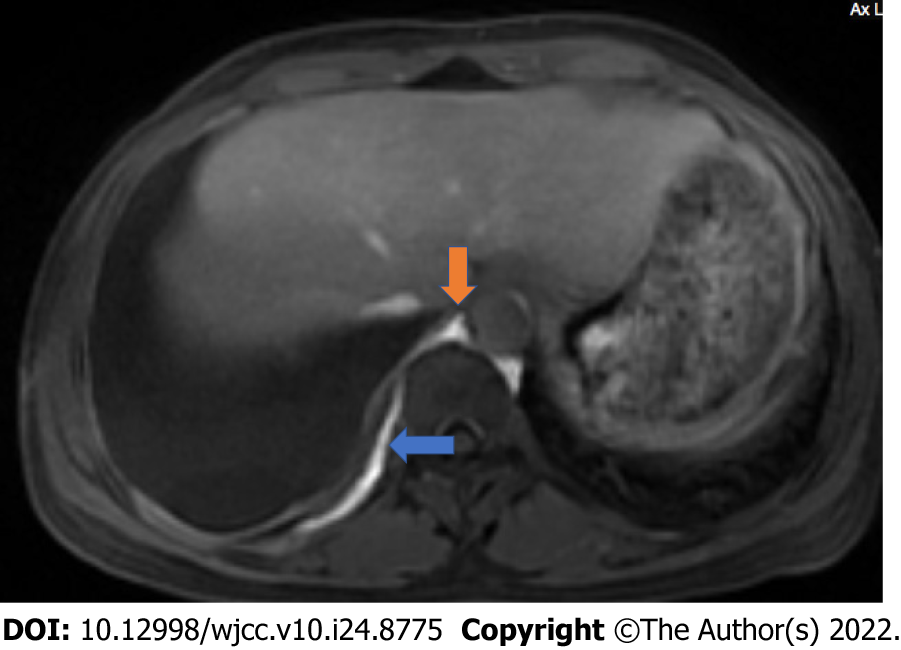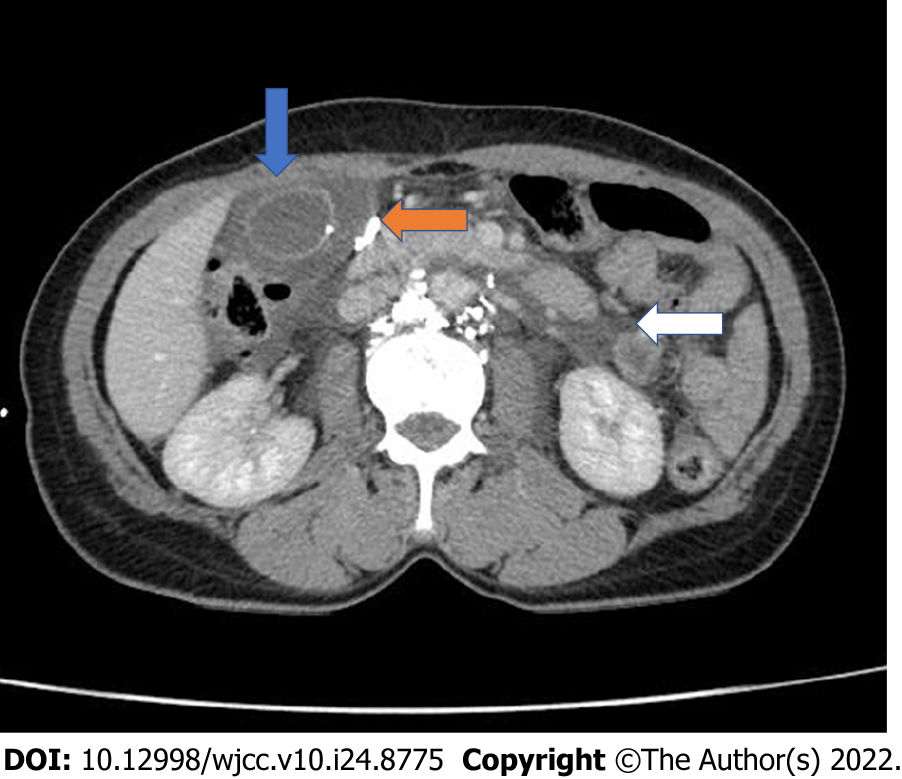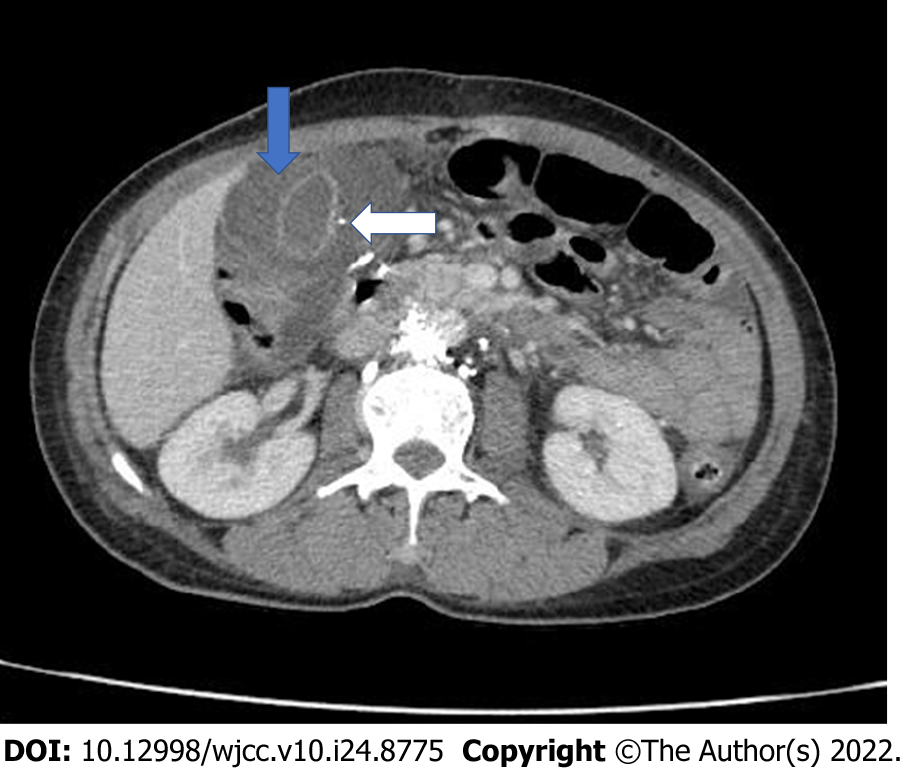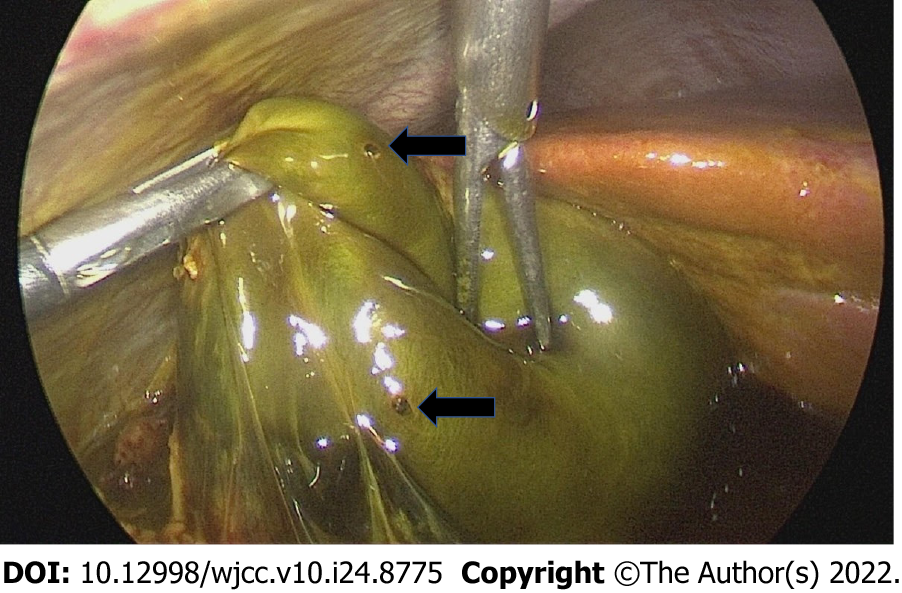Copyright
©The Author(s) 2022.
World J Clin Cases. Aug 26, 2022; 10(24): 8775-8781
Published online Aug 26, 2022. doi: 10.12998/wjcc.v10.i24.8775
Published online Aug 26, 2022. doi: 10.12998/wjcc.v10.i24.8775
Figure 1 Contrast-enhanced magnetic resonance (MR) lymphangiography before treatment.
Axial T1-weighted fat-saturated post-gadolinium image revealed the leakage of contrast agent (blue arrow) from a right-sided branch of the thoracic duct (orange arrow) into the right pleural cavity.
Figure 2 Intranodal lymphangiogram using digital subtraction angiography prior to treatment.
Frontal image of digital subtraction angiography revealed dilated lymphatic vessels and a lymphatic malformation in the lower thoracic duct (orange arrow), resulting in the leakage of contrast agent into the right pleural space.
Figure 3 Contrast-enhanced computed tomography after intervention.
Axial image showed gallbladder wall thickening of approximately 14 mm and subserosal edema (blue arrow). Peripancreatic fluid is observed extending into the pararenal spaces (white arrow) and bilateral paracolic gutters. A small, high-density nodule is observed in the gallbladder wall (orange arrow).
Figure 4 Contrast-enhanced abdominal computed tomography after 3 days.
Axial image shows further increased gallbladder wall thickening (~20 mm) and subserosal edema (blue arrow), without evidence of stones, pseudoaneurysm, or contrast agent leakage. A small, high-density nodule can be observed in the gallbladder wall (white arrow).
Figure 5 Laparoscopic cholecystectomy.
Image revealed 2 holes 1 mm in size (black arrows) in the base and funnel of the gallbladder.
- Citation: Dung LV, Hien MM, Tra My TT, Luu DT, Linh LT, Duc NM. Cholecystitis-an uncommon complication following thoracic duct embolization for chylothorax: A case report. World J Clin Cases 2022; 10(24): 8775-8781
- URL: https://www.wjgnet.com/2307-8960/full/v10/i24/8775.htm
- DOI: https://dx.doi.org/10.12998/wjcc.v10.i24.8775













